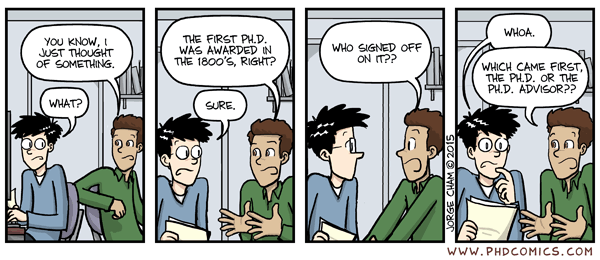Dette er en fortsettelse på lederen til K2 nytt fra forrige uke der vi fokuserte på den nye TDI (totale direkte og indirekte kostnader) modellen som UiB har implementert og som instituttene nå budsjetterer prosjekter ut fra. Modellen består som…
Month: May 2015
Leserinnlegg 1Letter to the Editor 1
Fra Professor Karl-Henning Kalland 22. Mai
Leser innlegg 2Letter to the Editor 2
Fra Professor Ketil Grong 23. Maj
Nyhetsbrev – ny studieplan i medisinNewsletter – new syllabus in the medicine study programme
Fakultetet har opprettet en nyhetslenke som jevnlig vil legge ut nyheter relatert til arbeidet med utvikling av ny studieplan i medisin. Klikk her for mer informasjon. The faculty has launched a news site on which news related to the development…
«Building the National Institutes of Health (NIH) Grant Proposal” workshop 17. juni«Building the National Institutes of Health (NIH) Grant Proposal” workshop June 17
Onsdag, 17. juni holder Dr. Robert Parker ved University of Tennessee kurset «Building the National Institutes of Health (NIH) Grant Proposal” på UiB.
FEDMEFORSKNINGSDAGENE 19-20. OKTOBER 2015OBESITY RESEARCH DAYS OKTOBER 19-20 2015
Påmelding innen 1. juli. Abstrakt vedrørende fedme-/diabetes-relatert forskning sendes inn før 20. august.
UiB feirer Høyesterett 200 årUiB celebrates Supreme Court 200 years
I anledning jubileet inviterer UiB til boklanseringer og konferanse.
Frokostmøte: Lov, rett og digitaliseringBreakfast meeting: Law, Policy and digitalization
DigUiB inviterer til frokostmøte om lov og rett i arbeidet med digital undervisning og forskningsformidling – hvilke regler gjelder, og hvor finner du hjelpen du trenger?
«Ethics Appraisal Procedure» workshop, Ulrike Pihls Hus 16. juni, fra kl 13:00-15:15«Ethics Appraisal Procedure» workshop, Ulrike Pihls Hus June 16, 01:00-03:15 pm
Kurs i å skrive etikk-delen i EU søknader. Bør leses av alle som søker EU. Mer info her. Workshop in Ethics Appraisal Procedure. Should be read by anyone applying for EU funding. More info here.
K1/K2 SEMINAR 3. juniNEW K1/K2 SEMINAR June 3rd
Vi har gleden av å invitere alle til siste K1/K2 seminar før sommerferien, 3.juni!
Vil du bli en TED-talker? Meld deg på Forsker grand prix!Do you want to become a TED-Talker? Participate in Forsker grand prix!
UiB søker ph.d.-kandidater til forskningsformidlingskonkurransen Forsker grand prix. Årets finale finner sted 23. september. Utsatt frist er satt til 5. juni. Henvendelse til Siv Eggereide; siv.eggereide@uib.noFor mer informasjon UiB is looking for PhD-candidates for the scientific dissemination competition Forsker…
Invitasjon til PhD-veileder-workshop: Trondheim 12.-13. Oktober 2015Invitation to PhD supervisor workshop: Trondheim 12-13 October 2015
Forskerskoler for Medical Imaging og for Nevrovitenskap arrangerer møte for veiledere i Trondheim 12-13 oktober. Mer info her. Norwegian Research School for Medical imaging and Norwegian Research School for Neuroscience will give a PhD Supervisor Workshopin Trondheim October 12trh and…
K2 undervisningspris for 2015.K2 Teaching Award 2015
Kandidater til prisen kan sendes til Siv Eggereide innen 15/6. Statutter finnes her. Please send nominations for the award to Siv Eggereide before June 15. Statutes can be read here.
Nye publikasjonerNew Publications
Uke 22/2015
Midtveisevalueringer uke 23Midwayevaluations week 23
Linn Anja VikørenOnsdag 3. juni, kl. 800-09:00Sted: Konferanserommet BB-byggetFor mer informasjon Anna BergTorsdag 4. juni, kl. 09:00-10:00Sted Møterom 7.1/7.2 7. etasje LaboratoriebyggetFor mer informasjon Karen MaulandTorsdag 4. juni, kl. 10:00-11:00Sted: Møterom 7.1/7.2, 7. etasje LaboratoriebyggetFor mer informasjon Mari Kyllesø HalleTorsdag 4.…
Overhead – dekningsbidrag – indirekte kostnaderOverhead – indirect costs
Det sies at kjært barn har mange navn – og det har også disse begrepene som forskerne knapt liker, men som man likevel må forholde seg til. Hvorfor tar jeg da dette opp i en leder til K2 nytt? Jo,…
Utlysning av Norgesuniversitetets prosjektmidler 2016. Invitasjon til søkerseminar 27. mai 2015.Announcement of Norgesuniversitetets research grants 2016. Invitation to application seminar May 27.
Prosjektmidlene skal stimulere til og fremme utvikling og bruk av teknologi for læring og fleksible studietilbud i høyere utdanning, og fremme utdanningssamarbeid mellom høyere utdanning og arbeidsliv gjennom bruk av læringsteknologi.
Horizons forelesning ved tidligere Nobelprisvinner Yuan T. Lee – Tirsdag 28. mai, Egget kl 16Horizons lecture by former Nobel prize winner Yuan T. Lee – Tuesday 28th of May, Egget at 4 PM
Forelesningens tittel: Energy, Environment and our Sustainable Future Det blir en lett servering før forelesningen, som starter kl. 16.15. Alle er velkomne! Les mer om forelesningen. Title: Energy, Environment and our Sustainable Future Refreshments will be served before the lecture, which starts at…
Presentasjon av kandidater til gruppe B , fakultetsstyretPresentation of candidates for group B , the Faculty Board
Valget av representant til fakultetsstyret for gruppe B (midlertidige vitenskapelige tilsatte) starter 22. mai kl 9 og slutter 28. mai kl 12. Resultatet blir offentliggjort like etter at valgstyret har hatt sitt møte den 29. mai. Her er en presentasjon…
Team basert læring (TBL)Team-Based Learning
TBL blir et viktig virkemiddel i den nye studieplanen. Det anbefales alle undervisere å sette seg godt inn i TBL. Nyttig informasjon finnes her. TBL will be an important instrument in the new curriculum. It is recommended that all teachers familiarize themselves…
Seminar: Primary cells – Cell Culture Transfection – Genome editing and IPSC generation
BioNordikaBergman holder seminaret «Primary cells – Cell CultureTransfection – Genome editing and IPSC generation» i Bergen 2. juni. Se vedlagte invitasjon for mer informasjon og påmeldingsfrist. BioNordikaBergman is giving a seminar about primary cells, cell culture, transfection, genome editing and more in Bergen on June…
MSCA Individual Fellowship Information and Proposal Writing Workshop, 9. juniMSCA Individual Fellowship Information and Proposal Writing Workshop, June 9
Tirsdag, 9. juni kommer NCP Ian Devine fra UKRO til UiB for å holde en Marie Sklowska-Curie Actions Individual Fellowships (IF) information and proposal writing workshop.
University Lecturers Summer School
Dublin City University har sommerkurs for universitetsforelesere som holder sine forelesninger på engelsk og som ønsker å utvikle sine ferdigheter på dette området. Du kan finne mer informasjon her.
FORNY2020 / BIOTEK2021 – SøknadsfristFORNY2020 / BIOTEK2021 – Application deadline
Det er nå mulig å søke om FORNY verifiseringsmidler og BIOTEK optimaliseringsmidler. Se vedlagte informasjonsdokumenter. Forskere med aktuelle prosjekter må ta kontakt med BTO så snart som mulig og innen 29.mai for innledende prosjektdiskusjoner. BIOTEK2021 …
PhD Comics
Nye publikasjonerNew Publications
Uke 21/2015.

